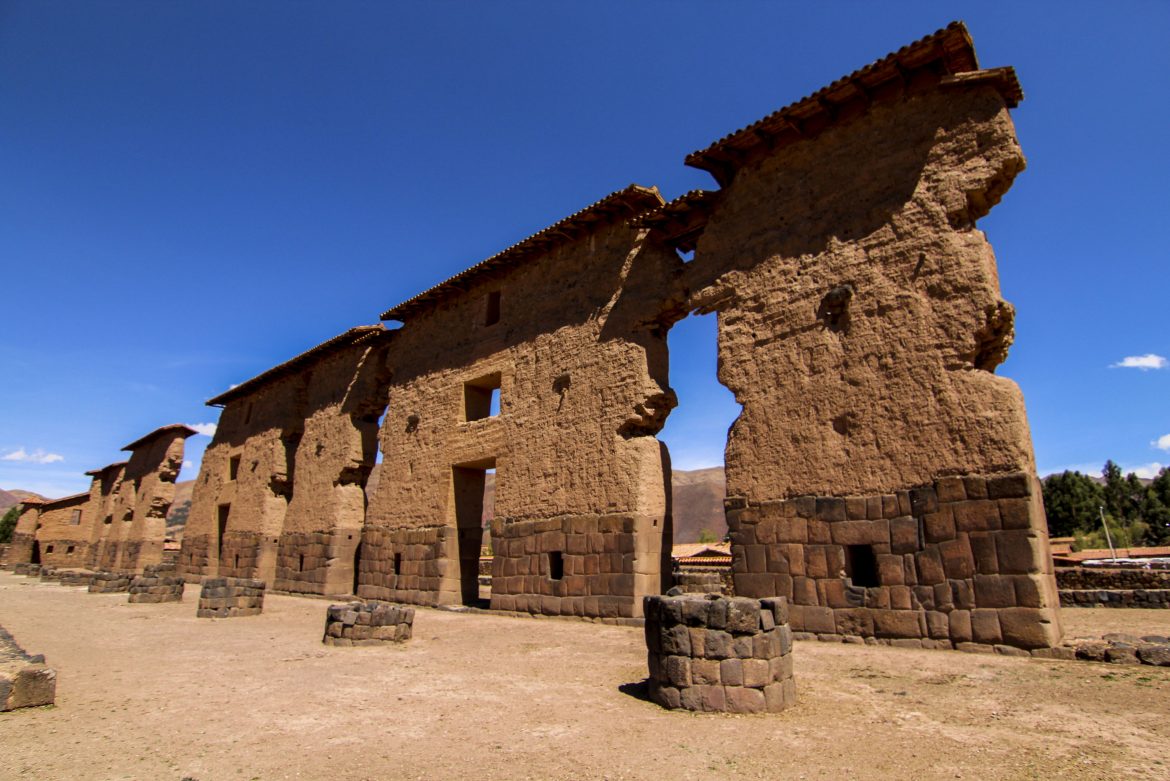The Raqch’i complex has different areas and each of them was designated for a specific reason. As evidence of the Incan architecture and the “Sistema de Seques”, which is understood as a form of the government of the Tahuantinsuyo that is closely linked to the Andean religion, the site is also known as the Wiracocha temple due to its emblematic constructions.
The most important construction is a huge two-story rectangular building with 92 meters length and 25.5 width. It has a central adobe wall, which measures between 18 and 20 meters height with an andesite stone base. It has windows and doors and it is flanked on both sides by a row of 11 circular columns, which bottom parts are made from stone and the upper ones from mud. Before its destruction by the Spaniards, the temple had what is believed the largest roof in the Inca Empire, its peak was the central wall that extended for about 25 meters on each side and continued over the columns. This construction is not surprising, if we consider that the ancient Peruvians built in one of the most demanding geographic areas of the planet: the Andes.
The survival of the people in the Andes was sustained thanks to their handling of vertical ecological floors known today as the 8 Natural Regions of Peru. Therefore, in Raqch'i we will also find warehouses called Collcas, in which they stored various products that they cultivated and that nourished them. An estimated amount of 156 circular collcas were used to store grains such as corn and quinoa, potatoes, chuño, dried fish (brought from the coast) and dried alpaca meat (brought from the Collao plateau). They were used for ceremonial purposes, but mainly to distribute their products to different countries or regions. The deposits are also unique since there weren´t any other warehouses with a square structures in the Tahuantinsuyo.
Currently a dance and culture festival is held there in mid-June. Different roads of the Andean Road System reached Raqch'i, which Inka Express invites you to discover with them ... BY PAVEL UGARTE CESPEDES TRANSLATE: MARIA MAGDALENA MAILHAMER
Glossary:
Seques: These are the imaginary lines that connected all the ceremonial buildings of the four regions, known as Suyos, in the Tahuantinsuyo.
Tahuantinsuyo: Andean Inca State, synthesis of millenary Andean cultures woven together.
Collcas: Differently formed enclosures with multiple storage functions.
Suyos: The Division of the Tahuantinsuyo into 4 regions: Chinchaysuyo, Contisuyo, Collasuyo and Antisuy

